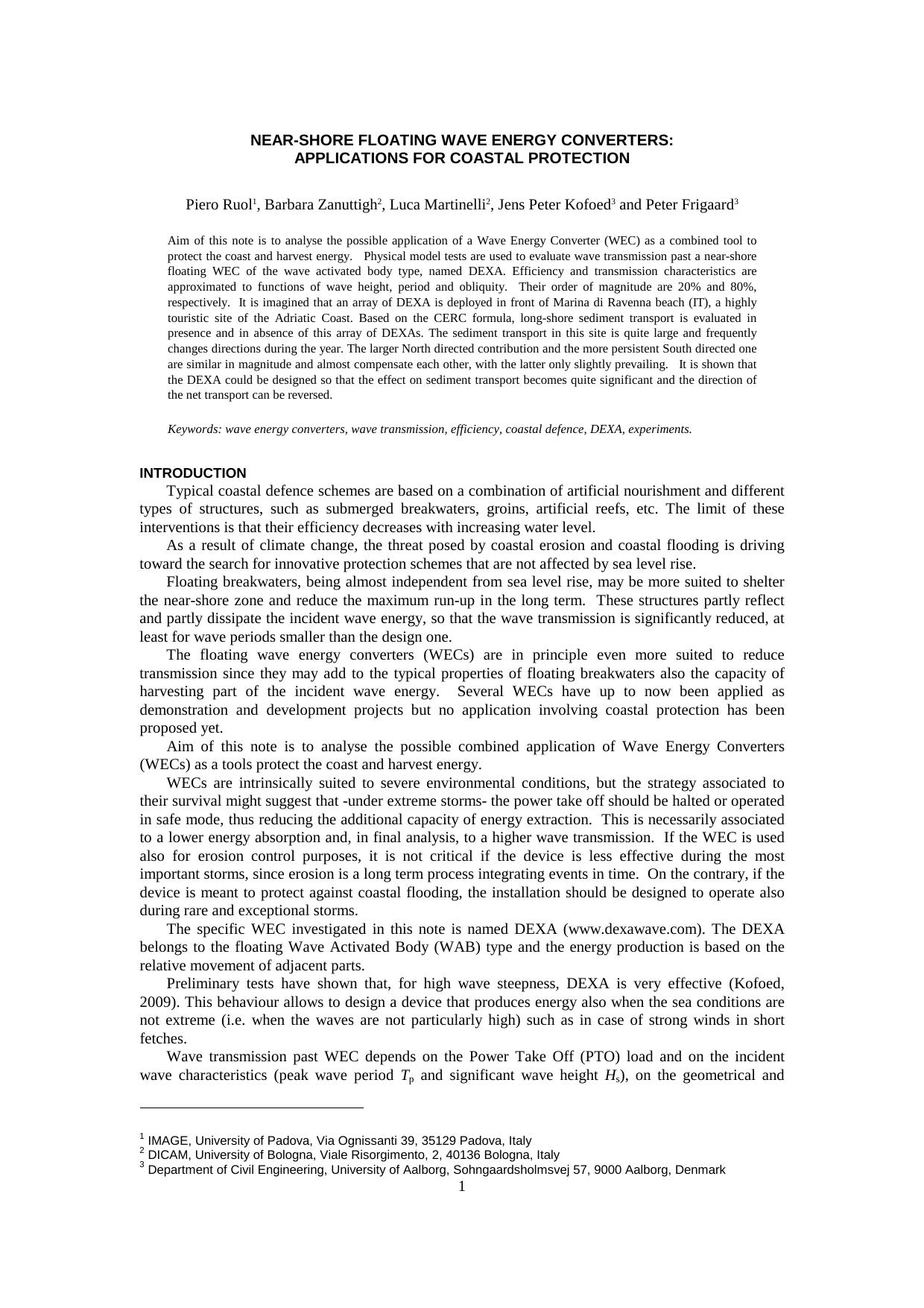
NEAR-SHORE FLOATING WAVE ENERGY CONVERTERS: APPLICATIONS FOR COASTAL PROTECTION PDF
Preview NEAR-SHORE FLOATING WAVE ENERGY CONVERTERS: APPLICATIONS FOR COASTAL PROTECTION
Aim of this note is to analyse the possible application of a Wave Energy Converter (WEC) as a combined tool to protect the coast and harvest energy. Physical model tests are used to evaluate wave transmission past a near-shore floating WEC of the wave activated body type, named DEXA. Efficiency and transmission characteristics are approximated to functions of wave height, period and obliquity. Their order of magnitude are 20% and 80%,respectively. It is imagined that an array of DEXA is deployed in front of Marina di Ravenna beach (IT), a highly touristic site of the Adriatic Coast. Based on the CERC formula, long-shore sediment transport is evaluated in presence and in absence of this array of DEXAs. The sediment transport in this site is quite large and frequently changes directions during the year. The larger North directed contribution and the more persistent South directed one are similar in magnitude and almost compensate each other, with the latter only slightly prevailing. It is shown that the DEXA could be designed so that the effect on sediment transport becomes quite significant and the direction of the net transport can be reversed.
